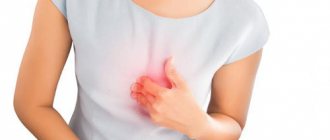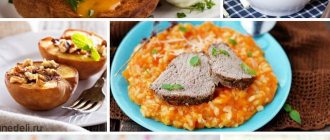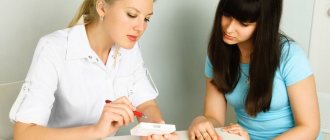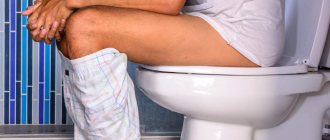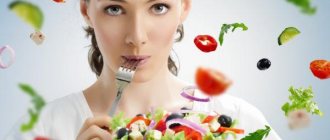A perforated stomach ulcer is an inflammatory disease in which the layers of the organ are destroyed and bleeding appears. If the patient has such a condition, surgical intervention is indicated. After it is carried out, the functions of the digestive organs are gradually restored. Therefore, it is important to follow a diet and postoperative regimen. You can learn more about them from a surgeon or gastroenterologist.
Recovery on the first day
Immediately after surgery for a perforated gastric ulcer, the patient gradually recovers from general anesthesia. At this time, he does not eat food and may be in a state of sleep. After this period is over, it is necessary to gradually saturate the body with useful substances. On the first day, you should not eat food enterally, that is, by swallowing. Therefore, all nutrients are administered intravenously.
After completing the first day, the patient is advised to eat in small quantities. This is done according to the following rules:
- drinking only drinks, solid food is prohibited;
- It is allowed to drink warm tea with sugar;
- To remove substances from anesthesia and restore kidney function, drinking warm rosehip decoction is recommended;
- drinks begin to be consumed gradually, from 1 tsp. every half hour.
Using the above rules allows the patient to restore normal peristalsis of all parts of the esophagus. If this stage has passed satisfactorily, other products begin to be introduced. The menu after surgery must be expanded gradually so as not to cause excessive stress on the stomach and other parts of the gastrointestinal tract.
Principles of a therapeutic diet
During the two postoperative months, the patient must adhere to a strict diet. Compliance with all medical rules and recommendations will avoid relapse of the disease and the development of the inflammatory process. For a speedy recovery, adhere to the principles of a healthy diet.
After surgery to remove a stomach ulcer, the patient must remember the rules to restore his condition:
- Not to starve. Abstinence from food for medicinal purposes is permissible only for the first three days after the intervention. You need to eat at least 6 times a day in small portions. The optimal weight of one is 200 g.
- You can only eat home-cooked food. This means that industrial sweets, sausages, cheeses, canned food and sugary soda are completely removed from the diet.
- Spicy dishes and marinades pose a danger to the mucous membrane, irritating it. Even garlic, which is so beneficial for the body, should be excluded from the menu, since it is a natural irritant and also provokes the release of acids. Restrictions also apply to table salt, which is better replaced with sea salt.
- Eating after surgery involves grinding solid food into a puree. For example, boiled vegetables can be blended using a blender.
- Doctors prohibit cooking food with added oil or animal fats to avoid complications. In general, after gastric surgery, the diet should consist of steamed or oven-cooked dishes that do not cause irritation of the mucous membrane.
- Observe temperature conditions. Do not allow foods that are too hot or cold, as a sharp change will negatively affect the condition of your epigastrium.
Doctors will provide you with a complete list of products for consumption in the postoperative period.
What is allowed
After gastric surgery, the patient is prescribed a strict diet, which he must follow for at least a year. You can try any of your favorite treats only starting from the second postoperative year.
So, doctors allow the following products:
- omelet and steamed eggs;
- dietary meat (turkey, chicken and beef);
- low-fat dairy products;
- vegetables (potatoes, pumpkin, carrots, zucchini);
- fruits (apples, pears, bananas);
- cereals (oatmeal, rice, buckwheat, pasta).
A menu that includes this food will give the patient strength and energy for a speedy recovery.
What is prohibited
During the period after perforation, the patient should not consume a number of foods that will negatively affect his condition and create discomfort in the stomach and intestines. The list of prohibited foods includes:
- bakery products, muffins;
- legumes;
- any sauces;
- sweets, nuts and seeds;
- preservation, marinades;
- seasonings, spices;
- semi-finished products;
- fried and fatty foods.
Peptic ulcers completely exclude products that contain cocoa.
Also during the recovery period, and in later life, you should give up smoking and other bad habits.
Basic rules for following a postoperative diet
In the first 2 weeks, it is important to follow all the surgeon’s instructions. During this rehabilitation period, the damaged mucous membrane begins to heal. Any excessive exposure is fraught with damage to the mucous layer and bleeding.
It is recommended to adhere to the following rules:
- strict dosage in food, the doctor prescribes its amount in grams per dose;
- food is divided into 6-8 meals, each portion is small;
- all products must correspond to the dietary table number;
- food should be neutral to eliminate the aggressive effect on the mucous membrane;
- products should be easily digestible and not cause excessive release of hydrochloric acid;
- The maximum temperature for heating food should be +50°C, and the minimum temperature should be +30°C.
Following these rules will allow you to recover quickly without complications. For patients with peptic ulcers, it is recommended to use table numbers: 0, 0A, 0B, 1, 1B.
Diet after surgery
Meals after gastric ulcer surgery should be balanced and steamed. This method of preparation should be followed for a long time, and sometimes for the rest of your life.
The main goal of postoperative nutrition is to minimize the load on the digestive tract and ensure protection of the stomach walls. Therefore, the diet after surgery should be determined by a specialist. He must provide a detailed list of permitted and prohibited foods and recipes. In any case, you must follow a diet. Otherwise, there is a high risk of a recurrent ulcer.
1 Week
In the first week after surgery, the patient is advised to rest and receive the most gentle nutrition possible. In the first 24 hours you should not only eat food, but also drink water. With your doctor's permission, you can drink half a glass of water on the second day. This amount of liquid is divided throughout the day.
If the recovery process is within normal limits, then during the third day you can drink 0.5 liters. warm water. On the fourth day after gastric ulcer surgery, you are allowed to eat liquid food prepared according to a dietary recipe. For example, low-fat turkey or chicken broth, liquid jelly.
The volume of food is calculated in glasses. So, you are allowed to drink 3-4 glasses a day. On the fifth day, liquid semolina in water and low-fat yogurt are introduced into the diet. In order for the body to recover faster, meat puree begins to be administered 7 days after the operation.
2-3 week
The subsequent diet should consist of easily digestible and boiled foods. After a week, you are allowed to eat the following dishes:
- mashed potatoes;
- porridge in the form of puree;
- vegetable soups with broth;
- steam cutlets;
- baked vegetables;
- curd soufflé;
- some dried bread.
Advice! At this time after surgery, it is advisable for the patient to buy food for children at the pharmacy. Such products meet all dietary requirements.
The attending physician should tell you what you can eat after gastric ulcer surgery during this period.
After 3rd week
Particular attention should be paid to the choice of foods 3 weeks after gastric surgery. After all, it is during the first months that the digestive system gradually adapts to the new diet.
During this period, other products gradually begin to be added. The menu includes almost all permitted products. Special attention is paid to dishes enriched with animal proteins: low-fat cheese, low-fat fermented milk products, chicken, eggs, fish.
If recovery proceeds without complications, then after 2-3 months the consumption of non-acidic mashed berries and fruits is allowed. However, it is necessary to adhere to dietary nutrition for a long time. You can expand the menu after a year if the rehabilitation process is going well.
Thus, after surgical treatment of a peptic ulcer, nutritional correction is required, as well as compliance with all doctor’s recommendations. Only with favorable development can you return to your normal diet 2-3 years after surgery.
Dietary table No. 0A
This table is intended for people on the 5th day after surgery. It is used only after gastrointestinal motility has been restored.
For 1 meal the following nutritional values must be observed:
- proteins - 10 g;
- fats - 15 g;
- carbohydrates - 150 g.
Authorized products:
- slimy porridge;
- vegetable broth;
- fruit jelly;
- rosehip decoction, which can completely replace the consumption of water per day.
Food consumption is divided into 8 meals.
First day:
- Breakfast: mucus-like porridge. You can add 1 tsp. cream. Instead of water, drink rosehip infusion.
- Second breakfast: jelly made from fruits, such as pears. It must be highly diluted. Tea with a small amount of sugar is used as a drink.
- Snack: fruit compote.
- 1 lunch: chicken or turkey broth, rose hip decoction.
- 2nd lunch: the remaining half of the fruit jelly.
- Afternoon snack: porridge from ground rice, lightly brewed tea.
- Dinner: beef broth.
Second day:
- First breakfast: semolina porridge with water, weak tea with a little sugar.
- Lunch: beef broth, rosehip infusion.
- Snack: Chicken or turkey broth.
- Lunch: fruit jelly, you can use pears.
- Second lunch: highly diluted jelly, tea with a little sugar.
- Afternoon snack: oatmeal with water.
- Dinner: turkey broth.
Third day:
- Morning: rice on water, dried fruit compote.
- 2nd breakfast: fruit jelly based on pear.
- Snack: chicken or turkey broth, rosehip broth.
- Day: oatmeal, weak tea with sugar.
- Afternoon snack: beef broth.
- Snack: rosehip drink.
- In the evening: pear jelly.
What you can't eat
The black list of drinks and foods must include everything that requires a long time to digest, irritates the mucous membrane, and increases the production of hydrochloric acid. You can only consume foods that do not have a strong chemical, thermal and mechanical effect on the walls of internal organs. When following a diet, the following are prohibited:
- nuts, seeds, popcorn;
- strong black tea, coffee, alcohol, carbonated drinks, kvass;
- legumes - beans, chickpeas, lentils, soybeans, peas;
- fatty meats and fish, as well as strong, rich soups and broths;
- vegetables containing a large amount of coarse fiber (turnips, zucchini, cabbage, zucchini, radishes);
- hot sauces, adjika, horseradish, mustard, vinegar, marinades;
- fresh bread, butter and puff pastry, buns;
- chocolate, cakes, candies, waffles, pastries, ice cream;
- everything fried, fatty, smoked, canned, spicy (including ginger, onions and raw garlic);
- citrus fruits - lemons, tangerines, oranges, grapefruits.
Dietary table No. 0B
After 5 days, the diet changes and new dishes are added to it. Nutritional value is:
- proteins - 50 g;
- fats - 50 g;
- carbohydrates - 300 g.
It is allowed to gradually introduce salt and solid foods, starting with purees. Lean varieties of meat and fish, eggs are used. This diet after surgery for a perforated gastric ulcer lasts for 4 days, it can be continued if there are complications. The portions of the dishes are small, no more than 250 g. It is not recommended to include milk, as it may cause bloating.
First day:
- Morning: omelet without milk, dried fruit compote.
- Lunch: porridge with water.
- Snack: pear jelly.
- Lunch: ground boiled chicken fillet, sweet tea.
- Second lunch: soft-boiled egg, rosehip drink.
- Afternoon snack: porridge with water.
- Dinner: lean fish fillet (ground), sweet tea.
Day 2:
- In the morning: dairy-free omelet, compote.
- 2nd breakfast: pear jelly.
- Snack: soft-boiled egg, sweet tea.
- Lunch: boiled turkey fillet, ground puree, rosehip infusion.
- 2nd lunch: soft-boiled egg, sweetened tea.
- Afternoon snack: apple jelly.
- In the evening: boiled ground fish, tea.
The days alternate.
Allowed products during the postoperative period
The diet after surgery for a stomach ulcer complicated by perforation depends on the patient’s well-being and the diet plan prescribed by the doctor.
The menu, depending on the table number, contains the following food products and dishes:
- weak vegetable and meat (chicken, turkey, beef) broths;
- vegetable, meat soups, with the addition of butter or cream;
- wheat bread crackers;
- boiled, stewed, baked meat (turkey, chicken, veal) in the form of cutlets, soufflé, puree, finely chopped cutlets;
- low-fat varieties of fish (pollock, hake) steamed, stewed without skin;
- milk and cream are added to dishes during cooking;
- cottage cheese;
- kefir;
- yogurt;
- porridges are cooked to a mucus-like liquid consistency (semolina, oatmeal, rice, buckwheat);
- butter, olive, sunflower;
- non-coarse vegetables (potatoes, beets, carrots, broccoli, cauliflower) steamed, boiled, baked;
- weakly brewed green and black tea;
- milk and fruit jelly;
- baked fruits, in compotes.
The diet after surgery and during any stage of gastric and duodenal ulcers should be compiled in accordance with this list of products.
Diet No. 0
If the previous table went well, the patient has no complications, the gastric mucosa is healing, the diet after the operation is changed to the next table. The nutritional value:
- proteins - 100 g;
- carbohydrates - 300 g;
- fats - 70 g.
First day:
- Breakfast: low-fat cottage cheese with cream, tea with sugar.
- Lunch: oven-baked apple, pear compote.
- Snack: a small portion of boiled cauliflower, pureed.
- Lunch: boiled chicken fillet, chopped in a blender, sweetened tea.
- Afternoon snack: omelette without milk, berry compote.
- Dinner: lean fish fillet, ground to a puree, and steamed pumpkin in the same form.
Second day:
- Morning meal: semolina porridge with cream, pear jelly.
- 2nd breakfast: baked apple with sweet tea.
- Lunch: ground fish fillet with tea and sugar.
- Afternoon snack: low-fat yoghurt with baked apple.
- Dinner: boiled beef (ground), pureed vegetables (carrots, broccoli).
Day 3:
- Breakfast: low-fat cottage cheese with the addition of a baked apple.
- Lunch: kefir with a small cracker of white bread.
- Lunch: boiled beef and broccoli puree, rosehip broth.
- Afternoon snack: pear or pumpkin jelly, soft-boiled eggs.
- Dinner: fish, ground in a blender, mashed potatoes, pear jelly.
Gradually, the number of meals in the patient’s diet decreases. The diet for a perforated stomach ulcer at this stage excludes snacking.
Features of the diet after surgery
In order for the recovery process to proceed without undesirable consequences, at first the patient should follow the principles of gentle nutrition. He must adhere to a diet after gastric ulcer surgery, consisting of the following rules:
- It is forbidden to starve. Food should not be taken for the first 48 hours after removal of a perforated stomach ulcer. Then you need to eat often and in small portions.
- You need to eat food slowly, chewing it well. This is necessary for the gradual normalization of the gastrointestinal tract and restoration of digestion.
- You should only eat food that you prepare yourself. All industrially produced products are excluded from the diet. If you ignore this condition, then irritation of the gastric mucosa cannot be avoided.
- Solid foods should be ground to a mushy consistency. The food should be warm. The optimal food option is boiled, steamed food.
Advice! Drinking alcoholic beverages when diagnosed with a peptic ulcer is strictly prohibited. Drinking alcohol with a perforated ulcer can even lead to the death of a person.
It is possible to restore the functioning of the gastrointestinal tract after surgery only by strictly adhering to all the doctor’s instructions on therapeutic nutrition.
Diet food No. 1B
This type of desk begins in the clinical setting and then the patient is discharged. At home he should continue the same diet. All solid food is pureed. You can prepare food by boiling, stewing, steaming, baking. The days alternate.
First day:
- In the morning: oatmeal with milk, rosehip juice.
- 2nd breakfast: pear jelly with the addition of a small piece of white bread.
- Lunch time: puree soup made from turkey, carrots, potatoes, tea with honey or sugar.
- Afternoon snack: low-fat cottage cheese with the addition of baked apple, rosehip drink.
- Evening time: steamed cutlets from lean fish fillet, jelly with milk.
- At night: 200 ml of kefir.
Day 2:
- Breakfast: omelet of two eggs with milk, jelly made from pears.
- Second breakfast: low-fat cottage cheese with honey and baked apples.
- Lunch: steamed turkey cutlets with a side dish of boiled beets, pureed in a blender. Rose hip decoction.
- Afternoon snack: buckwheat porridge with milk, you can add 1 small white bread cracker.
- Dinner: chicken fillet soufflé, garnished with boiled, grated carrots. Sweet tea.
Third day:
- Breakfast: rice milk porridge with a small piece of butter. Rose hip decoction.
- Lunch: kefir with 1 white cracker, boiled egg.
- Lunch: baked fish fillet in the oven, steamed cauliflower, mashed to a puree consistency, dried fruit compote.
- Afternoon snack: cottage cheese with cream, baked apple.
- Dinner: pureed chicken fillet soup with carrots and broccoli (chopped), pear jelly.
- Before bed: 200 ml of drinking yogurt.
Healthy recipes
Vegetable salad
Beets are a storehouse of nutrients and a low-calorie product.
You will need to take 1 potato and a quarter of beets. Rinse the vegetables thoroughly and boil. Then cool and peel. Cut into small strips and add a little salt. Season with a small amount of olive or vegetable oil and stir. Serve with finely chopped greens.
Chicken with apples
You will need chicken fillet and 3 small apples. The meat is washed, listened to with a kitchen towel and seasoned with a little salt. The fruits are peeled, the insides are removed and cut into thin slices. They are placed in a baking sleeve, fillet is placed on top, the top of which is also covered with apples. The oven is preheated to 200 degrees, then the dishes are placed there for 30-40 minutes.
Cauliflower soup
Take a head of vegetable, an egg, a glass of low-fat milk, 2 tablespoons of sour cream. Cauliflower is divided into inflorescences, washed and boiled. The boiled vegetable is passed through a sieve or crushed with a blender. Heated milk is added to the chopped cauliflower and put on fire. When the soup boils, mix the egg with sour cream and add it to the dish, stirring and bringing to a boil again. Before use, the soup must be cooled to room temperature so as not to burn the mucous membrane of the gastrointestinal tract.
Postoperative table No. 1
If the previous diet after a perforated ulcer went well, proceed to the last one. It must be adhered to for a long time until the tissues have completely healed. The diet for a perforated ulcer becomes more extensive; many fruits, vegetables, and cheese are added to it.
Menu for one day:
- Breakfast: cottage cheese casserole with pears and apples, sweetened tea with cheese.
- Lunch: 1 glass of kefir with 1 piece of white cracker.
- Lunch: turkey soup with carrots and broccoli, dried fruit compote.
- Afternoon snack: omelet with milk, rosehip drink.
- Dinner: lean fish cutlet, stewed carrots.
Menu for another day.
- In the morning: low-fat cottage cheese with baked apples, dried fruit compote.
- 2nd breakfast: milk porridge with noodles, soft-boiled egg.
- Lunch: steamed turkey and boiled buckwheat, sweet tea.
- Afternoon snack: 200 ml kefir with 1 slice of white cracker.
- Dinner: fish fillet baked in the oven, drinking yoghurt with a piece of pear.
At home, a person should continue the sample menu after surgery for a perforated ulcer. It is forbidden to eat fatty, fried, spicy, bitter, sour, salty foods. Diet foods should not irritate the stomach. Failure to comply with the diet will slow down healing and increase the inflammatory process.
Prohibited Products
The prohibited list includes many products. They usually have a negative impact on digestion and create excess stress on the gastrointestinal tract, and can also cause excessive production of hydrochloric acid.
Therefore, any junk food is excluded from the diet for a perforated stomach ulcer. But you should also avoid the following products:
- boiled and fried eggs;
- various sauces, mayonnaise;
- fatty meat broths and soups made from them;
- spices, seasonings;
- confectionery;
- baked goods, fresh bakery products;
- instant products (fast food);
- salted crackers and nuts, seeds, chips;
- sausages;
- alcohol-containing and sweet carbonated drinks;
- grape;
- salo;
- mushrooms;
- legumes;
- citrus;
- cabbage;
- garlic;
- sorrel;
- canned food;
- kvass, coffee, strong tea;
- sweets, ice cream.
Advice! It is necessary to avoid fruit juice and cocoa drinks. It is better to replace them with medicinal mineral water without gas, for example, Essentuki, Borjomi.
Refusal to prepare dishes from the listed products will help shorten the rehabilitation period after radical therapy.
What is a stomach ulcer and what causes it?
A stomach ulcer is a disease that is characterized by a violation of the integrity of the mucous membrane of the organ. This disease in most cases is provoked by the activity of pathological bacteria. As a result of this process, the level of acidity increases, and the secreted gastric juice decomposes not only the food entering it, but also the walls of the organ itself, forming perforated ulcers. In some cases, drug treatment is insufficient and the patient is offered surgical intervention.
A perforated ulcer is a very dangerous disease. It represents the occurrence of an open defect through which its contents leak from the stomach into the abdominal cavity. The consequence of this process is the occurrence of peritonitis, which if not eliminated will inevitably lead to death.
In addition to the action of bacteria, the occurrence of this disease is facilitated by:
- reduced immunity;
- decreased duration and quality of night sleep;
- stress;
- long-term use of medications;
- bad habits - smoking and drinking alcohol;
- improper diet;
- heredity;
- the presence of other stomach diseases.
People who have the above factors in their lives need to undergo a medical examination once a year. It will help detect the defect at an early stage and try to cure it only by taking medications, giving up bad habits and restoring proper diet and rest. Otherwise, surgery will be inevitable.
How to eat
All food eaten must be pureed. Do not allow coarse or large pieces to enter the stomach - they injure the unhealed mucous membrane and can provoke unpleasant complications. In addition, after such stress, the gastrointestinal tract is not yet able to fully digest food.
https://youtube.com/watch?v=JCFs7fQ-ues
Particular attention should be paid to the regime. Eating at the same time will help the body prepare for this process in time and produce the proper amount of gastric juice. The patient, taking into account individual characteristics and the time of awakening/going to bed, must draw up a meal schedule and follow it strictly. The intervals should be no more than two hours.
Thus, the patient will eat approximately 7 times a day. Ideally, distribute the diet, leaving the most easily digestible foods for the evening. The last meal should occur no later than two hours before going to bed.
What portions should be:
- on the second day you can drink no more than 150 ml of water, 10 ml several times a day. With each subsequent day, the amount of fluid consumed should be increased by 150 ml;
- on the third day you can eat 500 ml of food in fractions. The norm for days 4–5 is to increase the volume eaten to 800 ml - 1 liter.
So gradually the patient should reach the norm of consumption.
It is important to remember the categorical ban on overeating, especially in the first period after surgery.
General rules
Resection of the stomach or part of it in a number of cases is the only possible method of treating and saving the patient’s life. Stomach surgery is a radical method of treating extensive malignant neoplasms ( stomach cancer ), stomach ulcers , polyps, and gastric bleeding that are not amenable to conservative treatment. Despite the progress of medicine, gastric removal remains one of the most difficult surgical operations, and even if it is successful and there are no significant complications, rehabilitation takes a long period of time, and nutrition after gastric surgery is the most important component of this process.
Diet after gastrectomy or after removal of part of the stomach
Parenteral nutrition after gastrectomy begins with Diets No. 0A , 0B , 0B ( 1A , 1B , 1B surgical) prescribed sequentially. Their intended purpose is to provide the patient’s body with a minimum amount of basic food nutrients, unload and spare the stomach, and prevent intestinal bloating and flatulence . The diet contains easily digestible foods containing complete proteins, fats, carbohydrates, vitamins and macro/microelements and an increased amount of free fluid. Salt consumption is sharply limited.
On the first postoperative day, the patient is shown to be hungry; on day 2 - the diet includes 250 ml of warm sweet tea and rosehip infusion (50 ml), which are given after 15-20 minutes in a teaspoon; on days 4-5, in the absence of abdominal bloating and normal peristalsis, Diet No. 0A and 2 soft-boiled eggs are prescribed; on days 6-8 Diet No. 0B ; on days 9-11 - Diet No. 0B .
- Diet No. 0A . Contains 5-10 g of proteins, 15-20 g of fats and 180-200 g of carbohydrates. The volume of free liquid is 1.8-2.2 l, sodium chloride is no more than 1-2 g. The energy value of the daily diet varies between 760-1020 Kcal. Food is served in liquid form. Fractional diet - up to 7-8 times a day and the amount of food per meal is no more than 250 g. The diet includes mucous decoctions with cream, light low-fat meat broth, fruit and berry jelly/jelly, sweet rosehip decoction, fruit and berry juices . Dishes with a pureed and dense consistency, drinks containing carbon dioxide, and whole milk are completely prohibited.
- Diet No. 0B . Contains 40-50 g of protein, 50 g of fat and 250 g of carbohydrates. The volume of free liquid is up to 2 l/day, sodium chloride is no more than 4-5 g. The energy value of the daily diet is 1580-1650 Kcal. Food is prepared in liquid/puree form. Diet - up to 6 times a day, portion size should not exceed 400 g. In addition to the permitted products of Diet No. 0A , the diet is expanded by adding mucous cereal soups cooked in vegetable broth, soft-boiled eggs, liquid pureed rice and buckwheat porridges cereals, protein steamed omelettes, pureed dietary meat and fish, sweet berry jelly.
- Diet 0B . It is a diet of a transitional stage to subsequent physiologically complete nutrition. Contains 80-90 g of protein, 70 g of fat and 320 g of carbohydrates. The volume of free fluid is 1.5 l/day. Sodium chloride no more than 6-7 g. The energy value of the daily diet is 2100-2400 Kcal. Food is served in puree form. Diet: 5-6 times a day. The diet additionally includes cream/mashed soups, pureed steamed meat and fish, pureed cottage cheese with cream, fermented milk drinks, baked apples, pureed fruit/vegetable puree and 50-75 g of white crackers.
The duration of each surgical diet is 2-4 days, but, if necessary, the time spent on them can be lengthened or shortened. That is, approximately, after 9-12 days, the surgical diet after the operation ends, and the patient is transferred to the standard Diet No. 1 according to Pevzner (mashed version), which limits the amount of food consumed at one time: no more than 250 g of the first pureed dish or a glass of liquid (250 g), and for lunch - only two dishes. Meals are fractional, 5-6 times a day.
The diet contains an increased amount of protein (100-110 g), which includes dishes from boiled minced meat, boiled fish, fresh mashed/calcined cottage cheese, and egg white omelettes. The amount of fat in the diet is at the level of physiological norms or several times higher (80-90 g). If the patient does not tolerate fats well (and in their pure form too), which is manifested by bitterness in the mouth, regurgitation, diarrhea, their quantity is limited to 60-70 g. The carbohydrate content is reduced to 300-320 g due to easily digestible carbohydrates.
In some cases, in particular with dumping syndrome , manifested by dizziness , weakness, palpitations , chills, a feeling of heat, abdominal pain and bloating, diarrhea that appears after eating, it is necessary to completely eliminate foods containing sugar, since the consumption of easily digestible carbohydrates is one of the reasons for its appearance.
